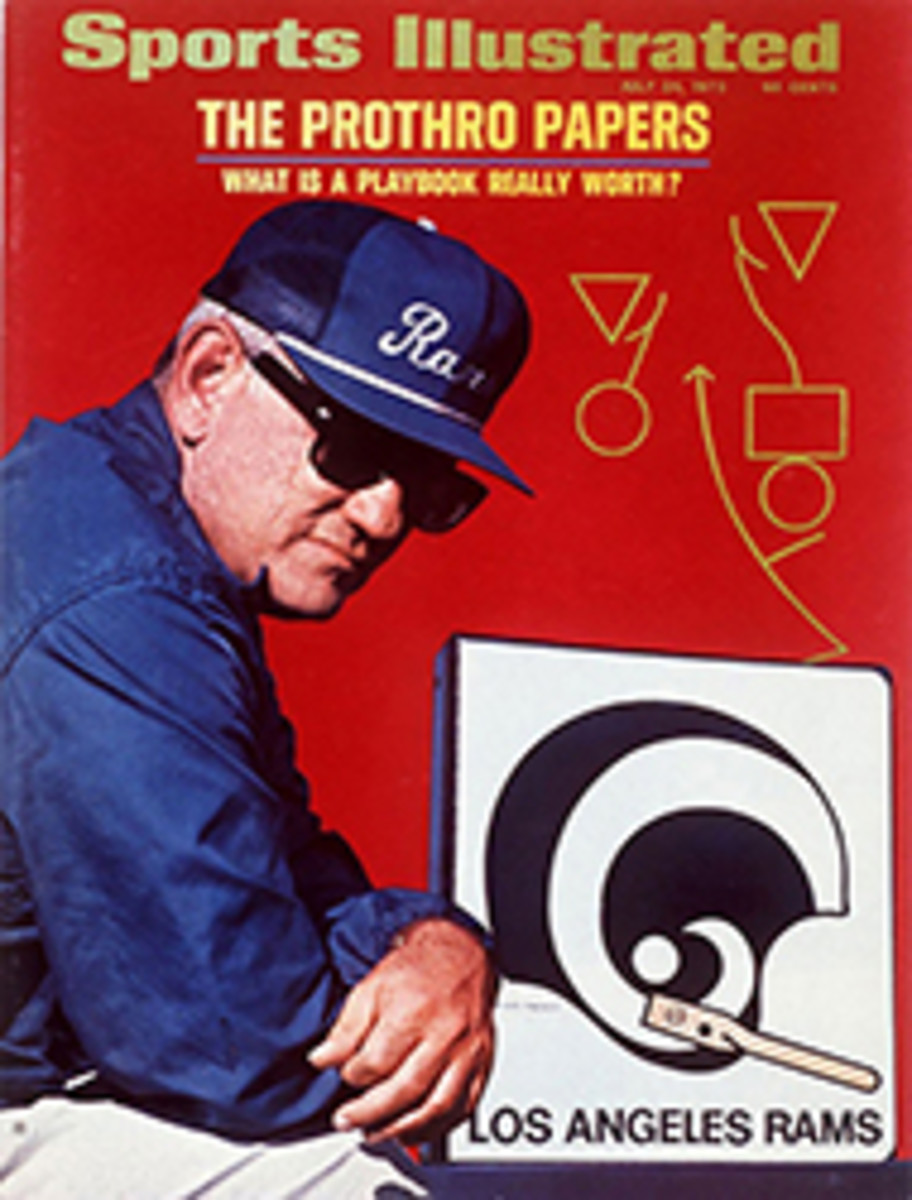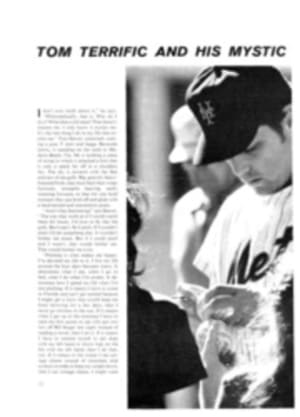
A blessing in disguise from Bethlehem
Don Rickles would not waste his time insulting Hank Slider. Paunchy, 47, and limping slightly, Slider is easy prey for anyone when he waddles to the foul line at a summer basketball camp and begins peppering the basket with shots. But oddly enough, the ball seems always to go in. "It's too small," somebody says. Or, "The basket's too big." Accustomed to hearing such talk, Slider tells the skeptics, "I put magnetic paint on the rim to attract the ball," and then he pops in another 10 or 15 straight.
The explanation seems as probable as any, coming as it does from a man who makes his living at the Bethlehem Steel plant not far from his hometown of Allentown. Pa., but there is something about the way he shoots—the flick of his wrist, the steady guide hand, the complete follow-through—that destroys the magnetic paint argument. Maybe Hank Slider is as good as he appears to be.
Such college coaches as Bill Foster of Utah, Bucky Waters of Duke and Harry Litwack of Temple think he is. They hire him to teach shooting, and if there is a better man at the art, particularly with kids, they will be surprised. "There are always plenty of other coaches at the summer camp Coach Foster and I run," Litwack says. "But when Hank is scheduled to speak, they all listen. Every coach can teach shooting, but this fellow has made a science of it and when he demonstrates, the ball goes in. He shoots 25 from different parts of the court and 25 go in." "His ability to teach borders on genius," says Waters. "I guess Hank is about 6'3". In one demonstration I saw him go head to head against 6'9" Jim Williams who was then a starter for Temple. Hank told Williams how and when he was going to shoot his hook shot and Jim still wasn't able to block it." Duke's foul-shooting improved from 67 to 76% after Slider worked one season with the Blue Devils. Lafayette and Fordham players, who are small by today's standards but who have winning percentages disproportionate to their size, have benefited from his individual instruction.
Sharpening up players' shooting skills for midwinter games has turned the off-season into something of an on-season for Slider. His specialized expertise makes him a sought-after addition to the staffs of summer basketball camps, those intensive training centers designed primarily for high school players that have now spread coast-to-coast. The past two summers Slider's lecture tour has taken him to camps from Wildwood, N.J. to San Diego. This August he even will become a ladies' man, for he will appear as an instructor at a women's developmental camp in Fairfield, Iowa and help train a U.S. team that hopes to tour Russia in 1973. The camp also marks the beginning of preparations to put together a U.S. Olympic squad in case a proposal to add women's basketball to the Games in 1976 is approved.
Slider loves to attend camps, but, to be practical about it, he has trouble getting to them because he never knows which shift he will be working at the steel plant. He mentioned this difficulty when he first met Litwack and Foster some 10 years ago, and that almost undid his career as an instructor before it had started. "We just wanted the guy to go away," Foster says, "but he was so persistent we gave him a chance. It was one of the smartest moves we ever made." Earlier, Slider had persuaded John Silan of Delaware Valley College and Howie Landa of Mercer County Community College in New Jersey that he was a teaching professional in the same sense that a golf, skiing or tennis instructor was.
Unlike many other shooting coaches who advise their students to eye the rim as they prepare to fire, Slider urges concentration on the basket. "You have 18 inches to work with," he says, "almost twice the diameter of a ball. It is much easier to put the ball in a basket that big than to aim at the rim."
Slider begins all of his instruction at the foul line because "that is where the mistakes show up." He claims a player who has developed a bad habit at the line will repeat the mistake when he shoots his jump shot from the floor. The thumb and tips of the second and third fingers of the shooting hand do all the work, Slider says. The fourth and little fingers of the guide hand are important because they must get under the ball and elevate it to the tips of the shooting hand fingers. Keeping the ball on the tips of the fingers is paramount. To make youngsters remember this, Slider has developed his Soft Touch Training Glove. It is a half-fingered mitt with a large pad in the palm to push the ball up on the fingers and a stiff plastic rib in the back to ensure the proper wrist action. "I designed it for kids, but a few older fellows are using it," says Slider. "I don't know if it would be legal for college games and I don't care. It is a training aid."
In all his years of starting at the free throw line, Slider has had only one real failure that he knows about, but it was outstanding. "Wilt Chamberlain was something else. You can invent a game, show it to Wilt and 15 minutes later he will beat your brains out. But he does not want to learn foul-shooting," says Slider, who once tried to help Chamberlain—obviously to no avail. Bobby Lloyd, the former Rutgers player who still holds the NCAA major-college consecutive free throw record (60), worked often with Slider during summers and feels it helped his shooting. "He broke it down to its simplest elements. I watched him work with a boy for 30 minutes and the improvement was obvious. It was like a refresher course for me," says Lloyd.
Slider's approach to shooting is not doctrinaire. "He does not overimpose his style. He shows tremendous flexibility in teaching without interfering with the natural shooting patterns of his students," says Foster.
"I would not dare change a player who was putting the ball in the basket," says Slider. Once when a coach asked him why he had just demonstrated two different methods to two boys, Slider answered, "Because I was teaching two human beings."
Slider's own basketball background is minimal. He was a varsity substitute at Allentown High School before he enlisted in the Navy halfway through his senior year in 1943. When he got out of the service in 1945, he and an aptly named buddy, Ralph Baskett, headed west to Baskett's native Arizona. Baskett made the team at Arizona State and Slider, who planned to enroll the next semester, stayed in shape by playing for Del Webb's Webbcos, an AAU club. But the Webbcos played a few pro teams and Slider's eligibility as an amateur was questioned. Rather than wait a year for a ruling on his status, he turned pro. His career lasted less than a year before a congenital back problem, which causes his present limp, ended it. Depressed, he went through a series of odd jobs, returned to Allentown in 1948 and began drinking and gambling heavily. The next two years, he recalls, were the worst of his life. And then one day he began to teach basketball to boys at a Salvation Army recreation center.
"I examined myself for the first time," he says. "I always could shoot well, but I never knew why. I began thinking about the process, and I discovered a lot of things, including the fact that I enjoyed teaching."
Though he permits all kinds of individuality in shooters, there is one thing he insists every player must have: a fluid movement of arm, wrist and fingertips. "It is just one motion to the basket," he says. And he has one surprising theory about shooting that does not involve the shooter. "When players pass, I tell them to put a slight spin on the ball so the shooter immediately gets the feel of it. My son David, who is a junior at Muhlenberg, knows how. He feeds me at my clinics, and then I can really shoot."
So the method is simple. Give it a spin, add some magnetic paint and let her rip.
PHOTO

